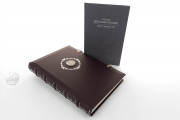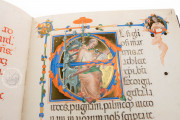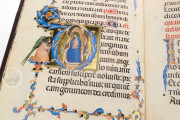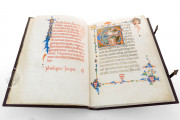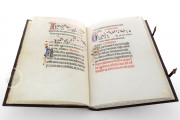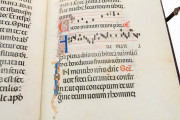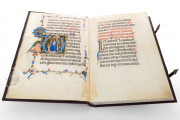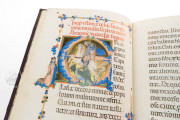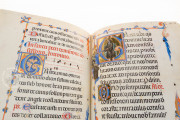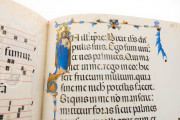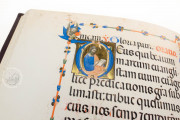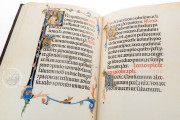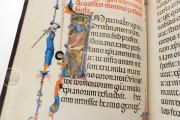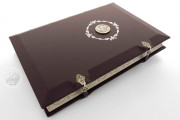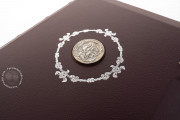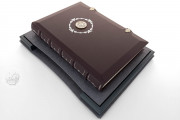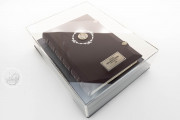The Codex of Saint George is a Christian liturgical manuscript that incorporates a biography of Saint George by the book's patron, Cardinal Jacopo Stefaneschi. The manuscript's illuminator—dubbed the Master of the Codex of Saint George after his work in this book—trained in Florence. He illuminated this codex when the cardinal resided in Avignon, but whether the book was made there is uncertain. It dates from between 1313 and Stefaneschi's death in 1341 or 1343. It boasts eighteen historiated initials and a dramatic and enchanting bas-de-page scene.
The manuscript is a portion of a missal, a book comprising the text and music of the mass, the Christian sacrament in which bread and wine are consecrated and consumed. Stefaneschi's 100-page text devoted to the life and miracles of Saint George (fols. 16v-69v) and his prayer service for the saint (fols. 69v-81r) are incorporated into this liturgical framework.
Initials That Tell Stories
Painted initials with subjects relating to the commemorated event or person embellish the missal's major feasts. One of the prayers for the feast of the Annunciation to the Virgin, for example, opens with a historiated D: the Virgin Mary is pictured enthroned against a burnished gold ground within the body of the letter. The kneeling angel Gabriel addresses her from outside the letter, and the dove of the Holy Spirit approaches from above (fol. 1v). The subject appears again with more economy in the initial that opens the Gospel reading for the feast (fol. 4v).
Saint George in Life and in Death
Scenes relating to the legend of Saint George occupy three initials: the saint grievously wounding a dragon to save a princess (fol. 18v), his martyrdom by beheading (fol. 42v), and his head held by Pope Zacharius (fol. 68r). The episode of the saint's attack on a dragon recurs in a scene of high drama that extends across the lower and outer margins of a page (fol. 85r). Included here are the lake—complete with waterfowl and fishes— from which the dragon emerged to threaten a city, the city's gate, and the citizens looking on. The saint on his mighty white horse rushes up to the dragon and thrusts his spear into the beast.
The Author at His Desk
The Master of the Codex of Saint George brought attention to detail not only to action scenes. He twice depicts Jacopo Stephaneschi writing (fols. 17r and 41r). In both images, the cardinal is shown with quill and penknife in the act of writing at a desk. In the more elaborate, the back of his chair forms a cupboard full of books, and his cardinal's hat is perched above (fol. 17r).
The cardinal is pictured not only in the two author portraits but also kneeling before Saint George (fol. 85r) and presenting a book to the recently canonized Saint Peter Morrone (1215-1296), who served as Pope Celestine V and founded the Celestine order (fol. 123r).
Fit for a Cardinal
The manuscript is a book of consummate artistry. The text, elegant and spacious, is in Gothic Rotunda script incorporating colored inks and featuring both painted and intricate pen-flourished initials. The master's illumination is in a rich palette and of the highest quality, the figures solid yet graceful. The current binding of gold-tooled brown leather dates from the seventeenth century.
We have 1 facsimile edition of the manuscript "Codex of Saint George": Vita des heiligen Georg facsimile edition, published by Belser Verlag, 2019
Request Info / Price

